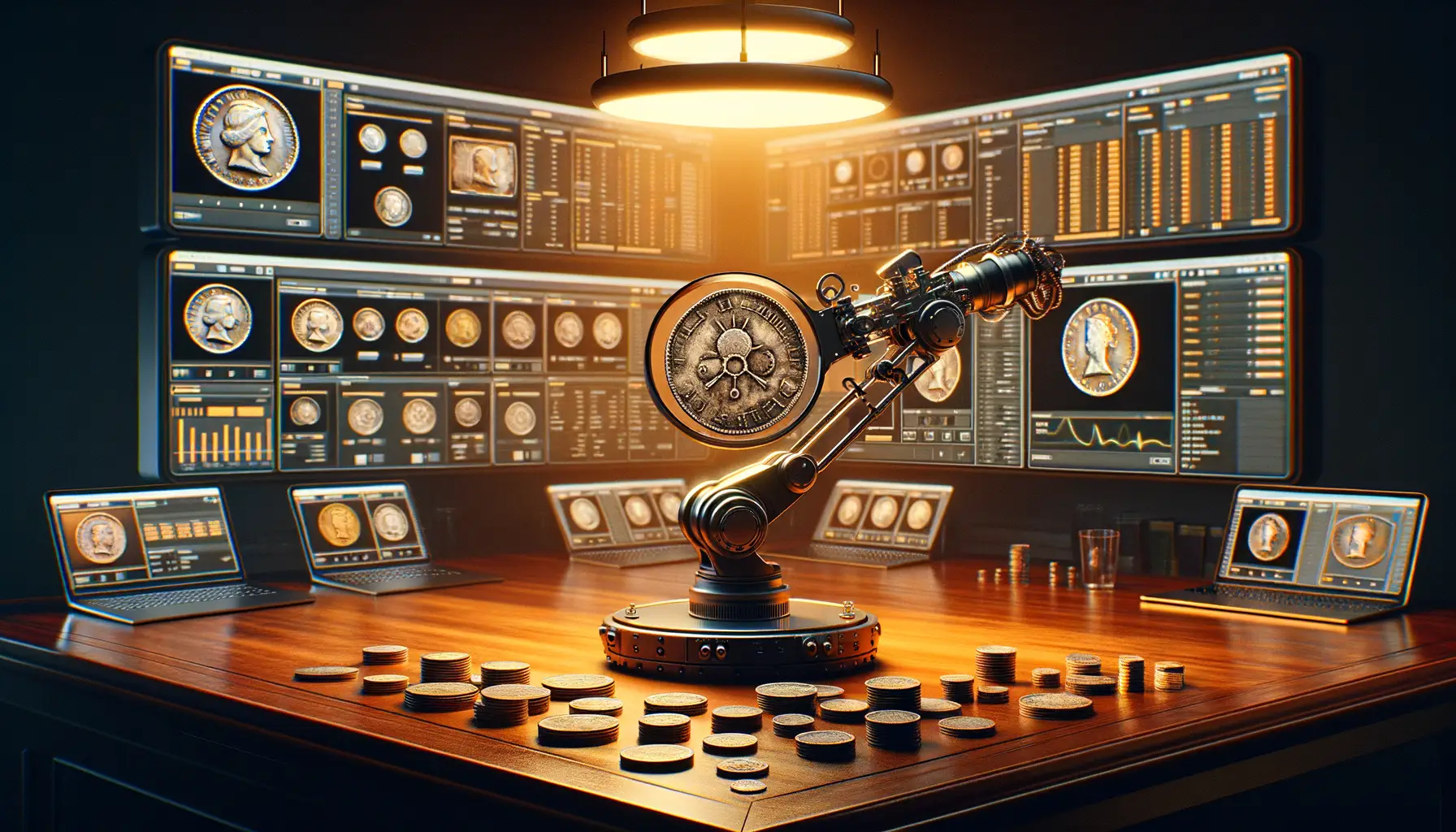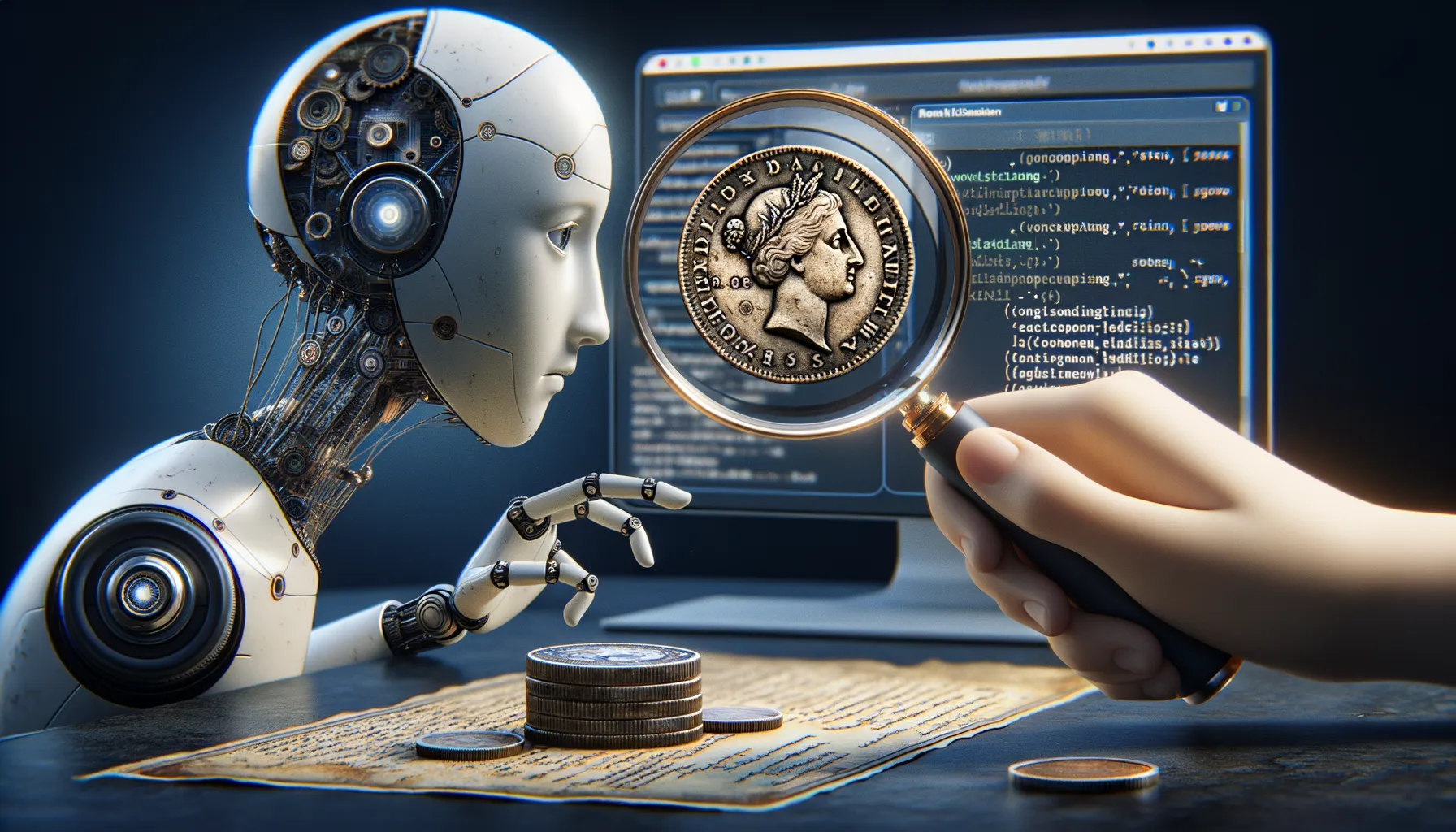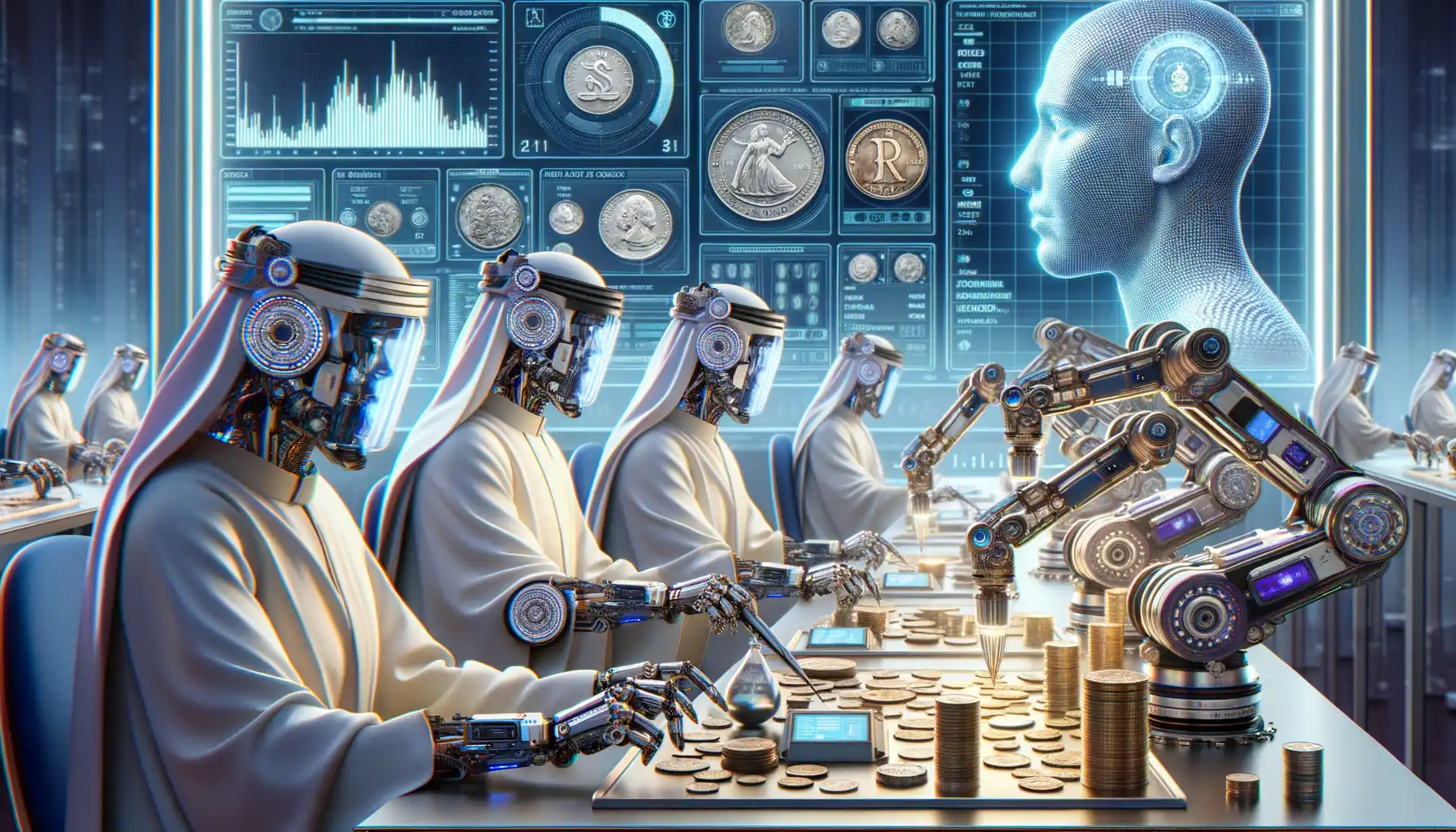Introduction to AI in Coin Grading
Imagine holding a centuries-old coin in your hand, its surface etched with history, stories, and mystery. Now, picture an advanced, unbiased helper analyzing that same coin—not with tired eyes or subjective opinions, but with unwavering precision. Welcome to the fascinating intersection of tradition and innovation where Artificial Intelligence (AI) steps into the world of coin grading.
Why Is AI Grading Such a Game-Changer?
Let’s face it—grading coins has always been as much art as science. Human graders, no matter how skilled, bring their own perspectives into the process. Lighting, mood, even experience level can influence results. But with AI? It’s like switching from painting freehand to using a perfectly programmed laser cutter. What makes it tick?
- Microscopic Precision: AI tools can analyze minute details invisible to the human eye, like tiny scratches or wear patterns.
- Complete Consistency: Unlike humans, an AI doesn’t wake up on the wrong side of the bed—it grades every coin as fairly as possible.
- Massive Speed: Evaluations that might take hours can now happen in minutes, freeing up time for collectors and dealers alike.
A Personal Touch Meets Machine Learning
If you’re a coin collector, you know the thrill of discovering a rare gem—but also the anxiety of sending it off for grading. Will it come back a fair grade? Is there bias involved? This is where AI shines brightest. By feeding on enormous datasets, AI systems learn to recognize patterns and anomalies specific to coins, such as mint marks, luster, or subtle signs of tampering. The result? A grading system that feels almost superhumanly accurate yet rooted in cold, logical analysis.
How AI is Revolutionizing Traditional Coin Grading

Goodbye Subjectivity: How AI Is Changing the Game for Coin Grading
The days of relying solely on the human eye to determine a coin’s grade are fading faster than an uncirculated coin in sunlight. Enter artificial intelligence, the precision-driven sidekick collectors and dealers didn’t know they needed. AI brings a level of objectivity that was once only a dream for numismatists. Imagine—no more debates over whether that subtle wear on a coin edges it into “VF-30” territory or keeps it at “EF-40.”
What makes this transformation so groundbreaking? It’s the meticulous way AI analyzes coins. Using high-resolution imaging and machine learning algorithms, an AI system reviews every crevice, strike, and imperfection.
- Surface quality: Scratches, luster, and toning are evaluated with mathematical precision.
- Strike strength: Did the minting process leave weak details? AI spots it instantly.
- Comparative grading: AI compares your coin to thousands of others with similar traits, offering unparalleled accuracy.
It’s not just about efficiency—it’s also trust. With AI, there’s no favoritism, no bias, just pure data-driven judgment. For anyone who’s almost cried after a misgraded submission (we’ve all been there), this is nothing short of revolutionary!
From Hidden Details to Historical Truths
AI isn’t just grading; it’s unveiling secrets. The technology can spot subtle errors, like a variation in mint marks or a previously overlooked die crack. These differences might make your coin not just collectible but priceless.
Picture this: you submit what you think is an ordinary Morgan Dollar from 1880. The AI scans it and discovers it’s a rare overdate variety—you’re suddenly holding a tiny silver jackpot. This is where AI doesn’t just assist; it teaches. Collectors, graders, and even historians are finding value in these remarkable capabilities.
AI is peeling back layers of history with every coin it scans. If traditional grading feels like manual photography, AI is the ultra-digital lens, capturing nuances we never even knew existed.
The Benefits of Using Artificial Intelligence in Coin Grading

Why AI Feels Like a Game-Changer in Coin Grading
Imagine holding a rare, centuries-old coin in your hand. Its edges whisper stories of ancient civilizations, but determining its true worth? That’s often a puzzle wrapped in human error. Enter Artificial Intelligence, the turbocharged lens that makes every detail crystal-clear.
AI doesn’t just speed up the process; it transforms how we understand coins altogether. With precision that rivals even the sharpest human eye, AI can:
- Identify microscopic flaws invisible to traditional methods.
- Ensure consistency by eliminating subjective bias in grading.
- Evaluate thousands of coins in mere moments, saving collectors and businesses precious time.
Think of AI as the Sherlock Holmes of coin grading—keen, meticulous, and never missing a clue. Take image recognition software, for example. It can analyze high-res photos of coins to assess wear patterns and strike quality with machine-like focus but human-level nuance.
A Personal Touch Backed by Tech
Here’s where it gets personal. For hobbyists investing heart and soul into their collections, AI levels the playing field. No more sleepless nights wondering if your prized coin was underappreciated or misjudged. The confidence AI brings? Priceless.
Challenges and Limitations of AI in Coin Grading

Where AI Trips Over the Details
Artificial Intelligence might seem like a superhero in the world of coin grading, but even superheroes have their kryptonite. While AI dazzles with speed and precision, it sometimes stumbles when tasked with understanding the *soul* of certain coins. For instance, AI can struggle to pick up on nuances like the subtle iridescence caused by historical toning or the artistic intent behind an irregular minting shape. A human expert, with years of hands-on experience and instinct, might call these imperfections “beauty marks” that enhance value, while AI sees them as deviations.
Then there’s the issue of data dependency. AI thrives on having all the right information—but what happens when it’s working with limited samples? Coins with rare minting quirks or those from lesser-documented periods can leave AI scratching its metaphorical head.
- How does it distinguish a rare error coin from an accidental scratch?
- Can it grasp the cultural significance of a specific edge finish or die type?
These challenges remind us that while AI is powerful, it occasionally misses the human story written in every dent and patina. Sometimes, only trained eyes and decades of intuition can truly decode the language of a unique coin!
The Human Touch Still Matters
Let’s not forget: AI isn’t infallible. Its reliance on strict patterns means it might fail spectacularly outside its comfort zone. Imagine an AI program attempting to grade an ancient Byzantine coin made from electrum—a mix of gold and silver. Such coins often have uneven surfaces due to age and primitive techniques. AI might penalize this as poor craftsmanship when, in reality, collectors cherish it for its authenticity.
And let’s talk about counterfeits—oh, the cleverness of savvy forgers! AI might flag obvious fakes, but hyper-detailed imitations demand a nuanced eye. Trained humans can sniff out inconsistencies in weight, sound, or even a coin’s “feel” that AI just hasn’t been programmed to sense yet.
For all its brilliance, AI hasn’t mastered intuition—or the ability to appreciate the stories coins carry through time.
Future Prospects of AI in the Coin Grading Industry

AI: Shaping the Next Chapter in Coin Grading
The future of the coin grading industry is nothing short of electrifying as we invite Artificial Intelligence to take center stage. Imagine a world where grading a rare 1794 Flowing Hair Dollar or a modern commemorative coin takes minutes—not weeks—and with a pinpoint accuracy that leaves even seasoned numismatists in awe. This isn’t just evolution; it’s revolution.
What excites experts most is AI’s potential to tackle challenges we never thought solvable. In the near future, self-learning algorithms may detect nuances like microscopic scratches or tone irregularities invisible to the naked eye. Even coins that have baffled graders for years—think off-metal strikes or ancient artifacts—may finally reveal their secrets thanks to this technology.
- Real-time grading during live auctions? A thrilling possibility.
- Global databases comparing millions of coins? No longer a pipe dream.
- Personalized grading reports tailored to collectors’ preferences? Just around the corner.
But it’s not all about speed and perfection. With AI shouldering the routine tasks, human graders could shift focus to storytelling—unearthing the history and culture behind each coin, making the experience more personal, more magical.
